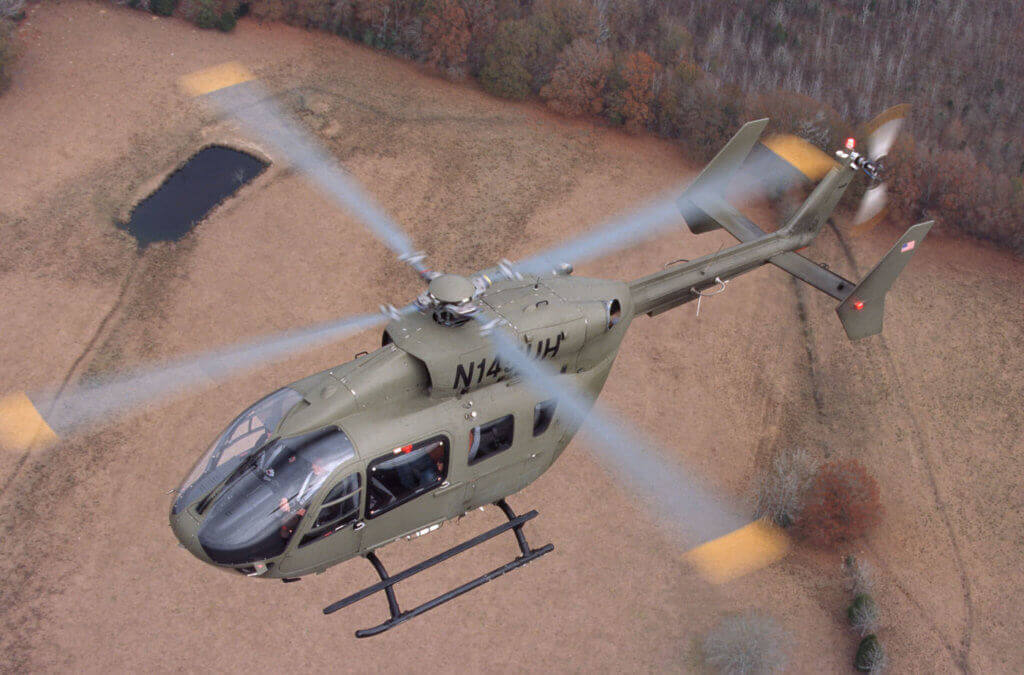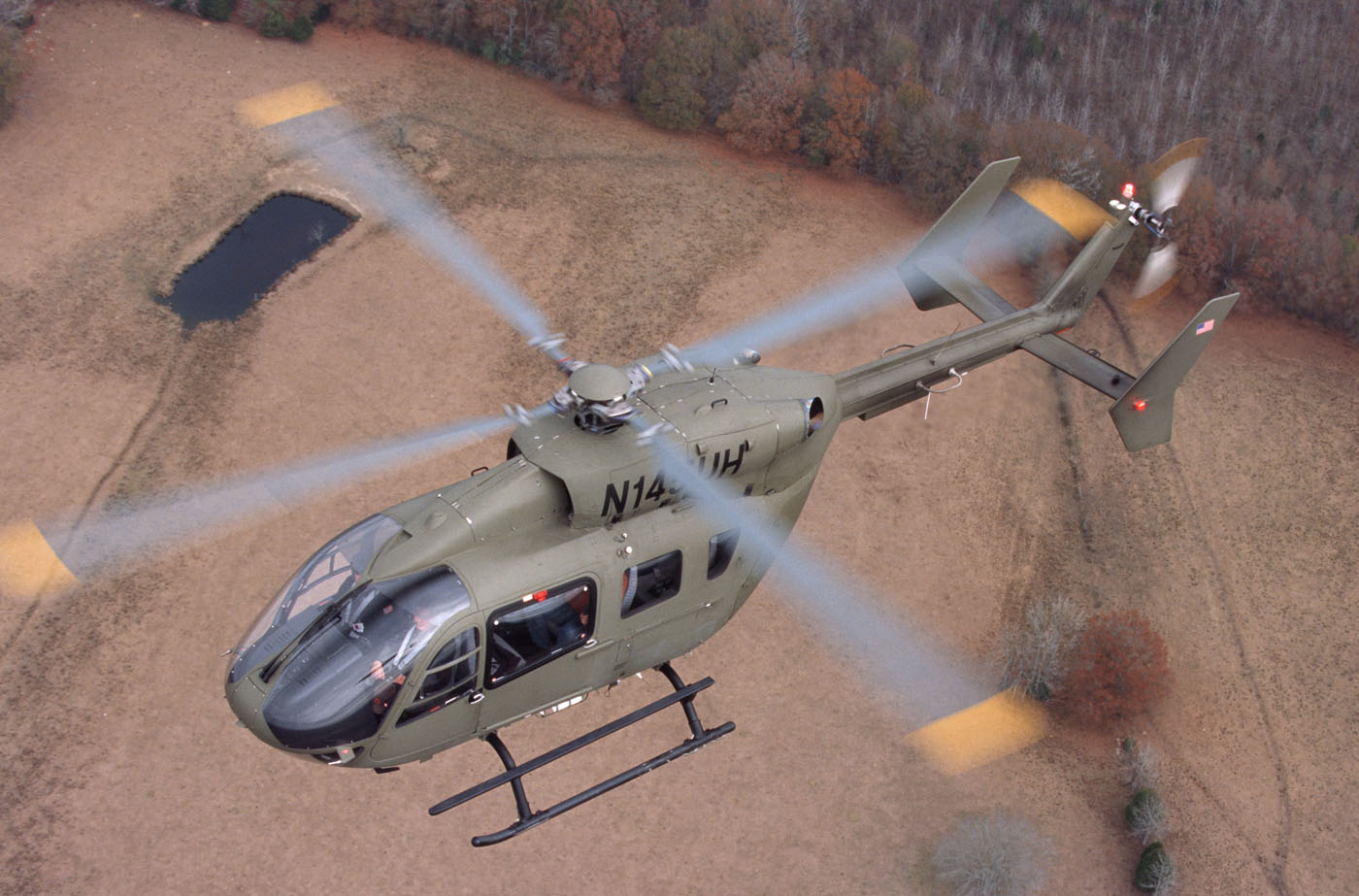Last week, it appeared that a three-year legal saga had come to an end when a federal appeals court cleared the U.S. Army to purchase 16 Airbus UH-72A Lakota helicopters — an acquisition that had been authorized for fiscal year 2016, but delayed by legal challenges from Leonardo Helicopters.
The legal saga has not come to an end.

In a conference call on Tuesday, Airbus Helicopters, Inc. president Chris Emerson informed reporters that despite the Jan. 23 ruling by the U.S. Court of Appeals for the Federal Circuit, Leonardo has chosen to pursue yet another lawsuit in the Court of Federal Claims, contesting Army plans to acquire Lakotas using fiscal year 2017 funding.
Leonardo’s actions could imperil the future of the Lakota production line in Columbus, Mississippi, which Emerson said is currently scheduled to deliver its last aircraft on Feb. 28.
And in his conference call with reporters, Emerson sought to cast Leonardo as a contractor that refused to play by established rules, threatening to upset not only Airbus, but the entire U.S. defense procurement system in the process.
“The implications of the present situation reach well beyond Airbus to affect all of our peers and competitors who hold current, and future, U.S. defense contracts,” Emerson said.
“The DoD [Department of Defense] acquisition system, with its own set of challenges, is under attack by a company that seems to think it has nothing to lose. And if they succeed it will constitute a credible threat to every major player in the U.S. defense industry.”
The dispute between Leonardo on one side, and the Army and Airbus on the other, traces its roots to the 2013 Army Aviation Restructure Initiative (ARI), which among other things called for replacing the Army’s aging Bell TH-67 primary training helicopters with UH-72A Lakotas.
The Army initially envisioned using existing aircraft for this purpose, but ultimately determined that it would need to acquire another 110 Lakota helicopters. When Leonardo challenged a sources sought notice that the declared the Army’s intention to purchase 155 Lakotas on an “other than full and competitive basis,” the Army instead exercised options on its existing Lakota contracts, leaving it just 16 helicopters short of its requirement.
In December 2015, the Army issued a Justification & Approval (J&A) to sole source these 16 Lakotas from Airbus. Leonardo didn’t back down, and in August 2016, a Court of Federal Claims judge sided with Leonardo, finding that the Army’s declaration of the Lakota as its “institutional training helicopter” was essentially a procurement decision that violated the Competition in Contracting Act.
This is the ruling that was overturned last week by the Federal Circuit, which found that the trial court judge had exceeded her jurisdictional authority in questioning an Army policy decision. The Federal Circuit also found the Army’s J&A to be “coherent and reasonable,” and vacated the trial court’s preliminary injunction against the 16-aircraft acquisition.
“In short, the case was without merit,” Emerson said in his Tuesday conference call. He blasted Leonardo for pursuing its case through the courts, rather than through the established system for protesting defense contract awards with the Government Accountability Office (GAO).
“There is a system that we have all followed for decades, until now,” he said. “That system exists primarily for the benefit of the warfighter, and the taxpayer, but also for the benefit of our industry and the thousands it employs. It’s called the GAO protest process.”
Addressing Leonardo’s latest lawsuit, Emerson said, “The only reason we can see for this lawsuit is to do what they nearly succeeded in doing with the last lawsuit: tie up Army acquisition in the court system for years, preventing the next Lakota contract long enough to strangle our U.S. production line and put our American workers out of a job.
“Why? If they can succeed in forcing us to issue the last pink slip on the Lakota line, they have just eliminated another competitor for the next half decade.”
Emerson cast Leonardo’s actions as ominous not only for Airbus and the Army, but also for other defense contractors and military branches.
“If they can successfully exploit the legal system to tie up contracts and military requirements, they can do it to anyone. They can do it to Boeing, Lockheed, Bell, Raytheon, Northrop, General Dynamics, and the list goes on and on,” he said.
“And to the rest of the Defense Department, please take note: this is an Army problem today, but it may very well be an Air Force problem next, and then a Navy problem afterwards,” Emerson added, mentioning upcoming procurements for which Leonardo is expected to compete.
Concluding prepared remarks, Emerson said, “Our message to Leonardo is simply this: this is not the way to be a responsible member of the U.S. defense industrial base. This is not the way to treat any customer, let alone the military that defends us, or the American taxpayers who fund them. . . .
“We do business with good products at a fair price, not with legal arm twisting. You say you want competition, then compete according to the same rules that the rest of us play by here in the U.S.”
On the same day as Emerson’s conference call, Leonardo Helicopters’ Italian parent company rolled out its 2018-2022 industrial plan, part of which aims to restore double-digit profitability to the company’s helicopter business by 2020.
A Leonardo spokesperson told Vertical that, due to the company’s focus on the rollout of the industrial plan, it did not have comment on Emerson’s remarks. Leonardo previously declined to comment on the Federal Circuit’s Jan. 23 ruling, and on the Army’s Jan. 4 sources sought notice that is the subject of its latest lawsuit.










When did it become the implied obligation of the US government (Army) and taxpayers to perpetually keep open the production lines of a manufacturer who produces commercially certified and sold aircraft from those lines?
They only produce the UH-72 at that location